Curious to know what is CPC in Digital Marketing?
Cost Per Click (CPC) refers to the actual price an advertiser has to pay for each click on the pay-per-click (PPC) marketing campaigns.
In other words, CPC is the cost that the advertisers are supposed to pay a fixed amount to publishers when their ads are clicked.
As per the recent reports, around 41 % of clicks go to the top 3 paid ads on the SERP.
If you paid enough attention, you could easily recall that CPC usually gets mentioned on topics around the paid advertisement.
Paid advertisement is a quick and easy method under digital advertising that generates immediate results. It is often used when the goal is to:
(i) Generate more leads
(ii) Get improved visibility
(iii) Get more traffic
There are two important factors on which the success of a paid advertisement (PPC campaign) depends upon.
One is the Click-through rate (CTR), and the other one is the Cost per Click or CPC.
To achieve a higher ROI, it is essential to have a higher CTR and a lower CPC.
In this article, we are going to discuss what is CPC and the steps that can ensure an effective PPC campaign.
Let’s begin with knowing what is CPC?
What is CPC and CPC Advertising?
In the simplest terms, CPC or Cost per Click designates the actual cost that you end up paying in paid advertisement campaigns or PPC.
It is the amount paid by the advertiser for every click on the PPC ad on platforms, such as Google AdWords and Bing Ads.
The CPC is determined using various factors, including the maximum bid, quality score, as well as the ad rank of other advertisers who have bid for the same keyword.
It is a crucial metric as the clicks and costs can add up rapidly, and if the CPC is too high, the advertisers cannot achieve a return on the investments they made in their advertising efforts, i.e., the ROI.
To understand what is CPC in Digital Marketing, paying attention to the CPC advertising formula will be useful for you.
CPC is calculated with the following formula:
Competitor Ad Rank/Your Quality Score + 0.01 = Actual CPC
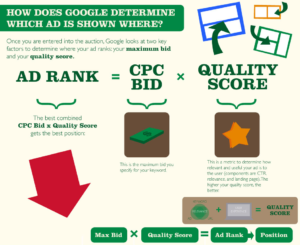
When you go for paid advertisement campaigns, Google AdWords usually asks you to disclose the maximum cost per click (MCPC) that you are willing to pay for the particular keywords. However, advertisers do not always have to pay this amount. They can be either charged equal to or less than the MCPC.
What is CPC in Google AdWords?
Since Google ads are based on an auction system, your bid is compared with bids of other advertisers. The actual amount that you pay, i.e. CPC, can never exceed the MCPC.
Again, what is CPC in Google AdWords & how much CPC you will be charged depends largely on three main factors? These are:
(i) Your closest competitors ad rank
(ii) Your Quality score
(iii) Your Maximum bid
Knowledge on what is CPC in Google Ad Words is important because the cost for the clicks add up fast. This, in turn, means you won’t be able to achieve a high ROI. Your aim should be to get quality traffic with affordable CPC advertising.
In this pursuit, it is always recommended to find out what is CPC in your industry.
This will tell you if you are paying more than your competitors. The average CPC varies depending on the industry. For example, the average CPC for financial service and industrial equipment are high.
CPC in AdWords:
The ROI in AdWords is determined through two factors:
- Amount of money spent on the clicks
- Quality of traffic which is obtained from the clicks
The objective is to get the kind of traffic that boosts the meaningful value of the business. The average CPC again depends on various factors, including:
- Industry to which the company belongs to
- Business type of company
- Networks which the company is already advertising upon
The sectors which are more competitive or have a higher rate of conversions (in terms of price), such as industrial equipment, enterprise software, or expensive services in the financial and law industries, have costlier CPCs.
Why is CPC in AdWords important?
CPC is the number that determines the success of the paid search campaign. It also shows how much AdWords is going to cost you.
The ROI, whether you are underpaying or overpaying for each of the actions, is determined by how much money you are paying for clicks on the ads. It also factors in the quality received for the investment. This refers to the quality of traffic brought in by the ads.
These factors make it very important to think about the cost per click in terms of both the values of the tick as well as the price. It is essential to identify and then target clicks that are valuable to the campaign while being inexpensive.
What is CPC in Digital Marketing?
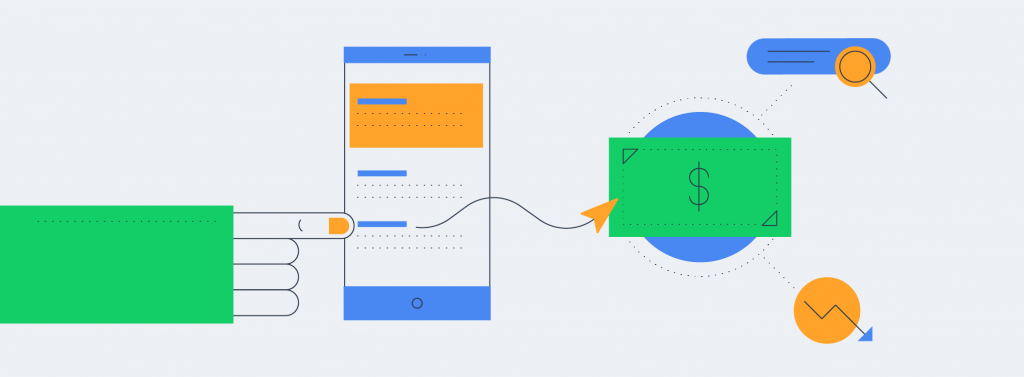
A click can be seen as a type of interaction that an interested person has with your ad offering.
You can consider a click to be the attention of a potential customer. When you pay for a click, you are actually paying for that attention.
When it comes to paid advertisement, the amount you pay for CPC is a deciding factor for the financial success of your advertisement campaign. The ROI for the campaign will be greatly influenced by how much you end up paying for each click (or action). Further, what quality of returns you are getting is another determining factor.
Cost and Value are the two aspects on which the effectiveness of the CPC must be measured. This is because our aim is not to get just any clicks. Our aim is to get the inexpensive clicks that also bring in the quality traffic.
Now, after being aware of what is CPC in Digital Marketing and what is CPC in Google AdWords, let us have a look upon few key tips upon CPC advertising-
Check out the following list of tips to lower your CPC and improve the financial success of your PPC campaign.
CPC Advertising Tips to Lower your CPC
1. Switch to Manual Bidding
It is a great idea to opt for automatic bidding if you are pressed for time or you are new to Google. When you go with automatic bidding, Google takes care of your bid amount and the bid strategy. This allows you to concentrate on the ad texts and other functions of the marketing campaign.
However, when you wish to have more control over your campaign, more views, and less CPA switching to manual bidding is a better idea. Remember, you still need a good tactic to reduce CPA and increase views through manual bidding.
(i) First, while doing manual bidding; set bids for one campaign at a time to keep things simple.
(ii) While running a campaign, you will find keywords that generate a good impression but convert less. Consider lowering your bids for such keywords.
(iii) Increase the bids for keywords that are generating conversions.
(iv) Select default bids that are close to the average industry CPC for your campaign.
Bidding optimally involves a bit of trial and error. Therefore, you may not derive great results at first, but as your campaign continues, you will realize how to adjust your bids efficiently.
2. Use Remarketing
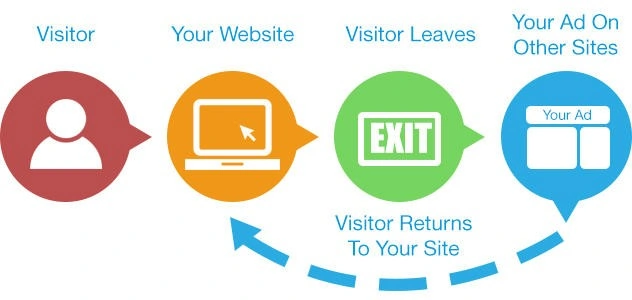
Almost 2% of the traffic that visits your website may easily get converted; But what about the rest?
If someone has clicked on your ad, then they must have been interested in your offerings.
Google AdWords has a brilliant method to reengage and convert the bounced off traffic. This can be done by going for remarketing. Remarketing is the practice of re-showing your brand, ads, and products to the bounced off traffic that just landed on the website without making a purchase.
Remarketing is a popular practice, and around 80% of marketers are practicing it. While doing it, just remember to adjust your retargeting membership duration. For example, it’s unwise to spend on CPC advertising beyond Christmas, if you sell Christmas greeting cards.
3. Go for Search Advertisements
Another great way to lower CPC, but still not compromise on the quality of traffic is going for only search advertisements.
Search advertisements are those ads that get displayed above the organic listing.
This should be the choice of your ad type if your target group compromises mainly of users who come to your site after searching a query on Google.
Choosing only search ads will greatly reduce your CPC. Display ad appears on the websites that are close to your ad topic. Usually, traffic coming from display ads is general traffic that does not possess the buying intent.
However, it is up to you and your unique situation that should influence the choice. One way of finding out if your display ads really provide conversion audience is by pausing the ad for some time and comparing the before and after results.
4. Optimize Ads for Location, Time & Device
You can be smart while designing your PPC ads; it will greatly reduce the CPC. How?
This can be done by controlling where your ads can be shown. You can instruct Google where to show your ads by defining the following parameters:
(i) Geographical location
(ii) Days and the time during the day
(iii) Devices ( Mobile and Desktop)
To define these parameters, you need to be thoroughly informed about the surfing and buying habits of your target audience. One way in which you can know about these is by going through the historical data on your previous campaigns or doing some market research.
Look for the data that answers which geographical location gives the most quality traffic, the days that drive the most sales, the time during the day that results in most purchases, and the most preferred device of your target audience.
After obtaining the above information, you can easily adjust your bids. For example, increase bids for Thursdays if this is the day that drives most sales. Further, lower the bid for Sundays, if the sales reported is low.
5. Include Long-Tail Keywords
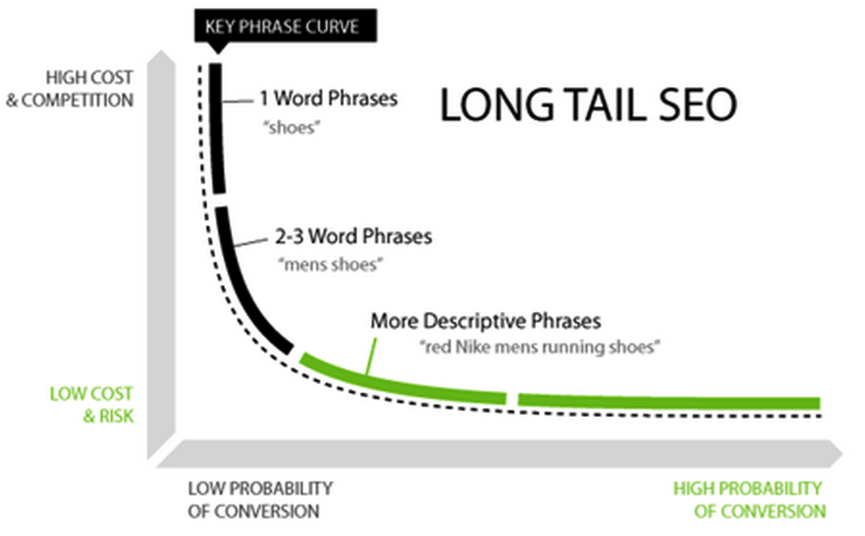
Long-tail keywords are an integral part of any keyword strategy. They contribute to almost 80% of the organic traffic. It’s one thing to be a big brand and go after head keywords. They can afford it!
However, if you do not have a big budget or want to be smart in your advertising expenditure, target long-tail keywords. Long-tail keywords not only make it easy for your ads to get more visibility, but it is also beneficial in sending quality traffic.
While head keywords such as ‘dentists’ can give you huge traffic, this will be very general traffic that may not have the buying intent. Driving such traffic will just unnecessarily increase your CPC. It’s much better to filter out the traffic through long-tail keywords and show your ads to only those people who are interested in your offering and also have the affordability.
6. Mention Negative Keywords
Not adding a list of negative keywords is not just a beginners’ mistake.
Many big brands have also realized it late that building a negative keyword list can actually increase their PPC campaign ROI.
Suppose you run a men’s shoe business. While going for the PPC campaign you found that your ads are getting triggered even for women’s and kid’s shoes, but the problem is, you don’t sell them. This is a scenario where your precious budget is going to waste.
What can you do?
You can add a list of negative keywords like ‘women’s shoes’, ‘kid’s shoes’, etc. for which your ads are unnecessarily getting triggered. This will save you money.
7) Lowering your Bids
This is one of the primary ways through which the CPC can be reduced. By lowering the bid, you are essentially giving Google a lower maximum CPC to charge for each click the campaign receives.
Owing to this, the position may drop a bit, but it ends up giving you the space to afford more clicks on the same budget. It also lets you show your ad for a longer time, thus, augmenting your exposure on Google. This helps with lead generation, as well.
You can also use Google’s Automated Bidding and Machine Learning to manage the campaign and also save some time. Through this, Google leads the campaign, from monitoring the bids to their adjustment.
However, if you want to have full control of the amount that you pay per click, you should switch to Manual CPC. It lets you focus on the keywords that have shown performance. Accordingly, you can then set individual bids for them.
8) Quality of the Landing Page and that of the Ad
Google rewards those advertisers who have new and compelling ads that hold up well with the users.
Landing pages should also be in relevance to the advertisement so that the users quickly get what they are looking for.Moreover, competitive keywords have excellent conversion rates, but they also have high CPCs.
To summarize, to lower the CPC, it is often required of you to target a specific audience so that one can reduce the ad investments in areas it might not work in. It is always better to know your audience and understand their requirements and then craft the advertisement accordingly.
The ad should be directed to the targeted or ideal audience. It helps improve the CTR as well. It also helps in reducing the costs and lowering the CPCs.
9) Quality Score
The quality score is affected by the following factors:
- The Relevance of the Keyword: Ads which have the keywords, which you are bidding on, in their text have a higher quality score as well as CTR.
- Click-Through Rate (CTR): It is a measure of how often the ad is clicked upon when it appears in the results of the search query.
Final Thoughts
We hope we could clear your doubts on what is CPC and how you can optimize it in Google ads.
Google Ads is a wonderful way of getting quality traffic in no time. You just have to tweak a little bit around your campaign to maximize results.
To learn and master the concepts of what is CPC in Google AdWords, you can enroll in the SEM Course. It will take you deep into the PPC definition & it’s functioning, Important Terms – Quality Score, Conversion Rate etc., Quality Score Overview to strategizing PPC campaigns through Setting objectives, goals & expectations, Actionable metrics for performance measurements and Formulating account structure.
SEM Training also deep dives into Effective segmentation of keywords, Usage of multiple match types, Non-overlapping Ad Groups along with powerful Ad writing techniques that can optimize your CPC campaigns in the conversion oriented manner.
In addition to all this, you will also understand Google search together with Rule based personalization of marketing at internet scale. It is also going to empower you about the overview of Google Adwords, Yahoo Search Marketing and Microsoft AdCenter.
How effective do you consider CPC advertising for optimizing the online presence of your business? Share with us in the comments.
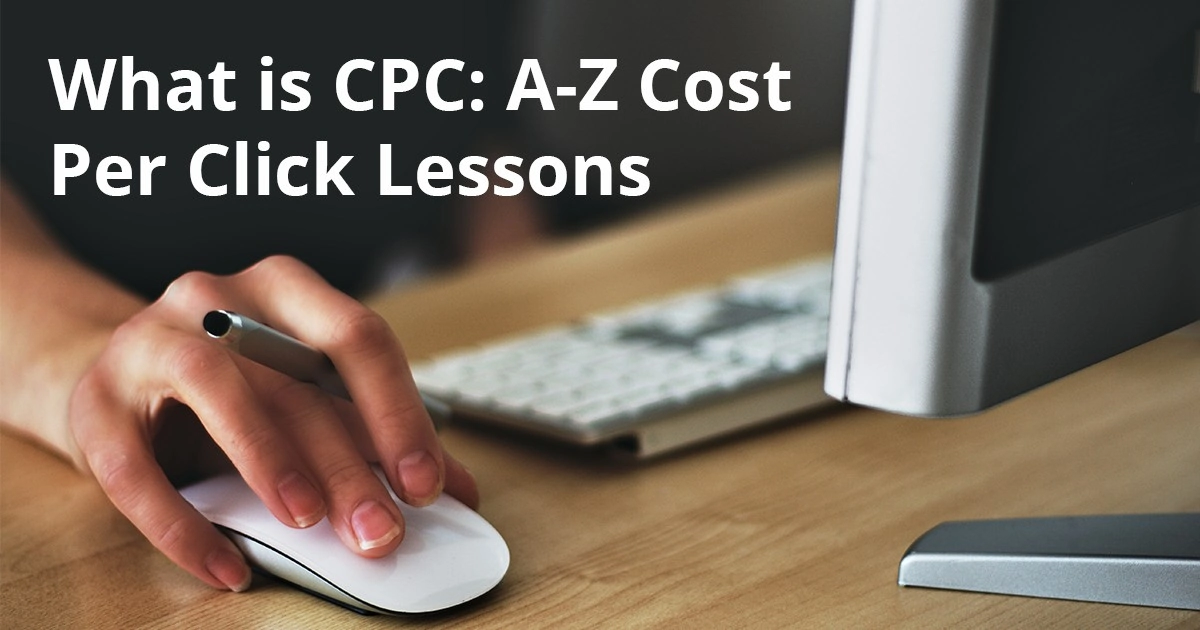










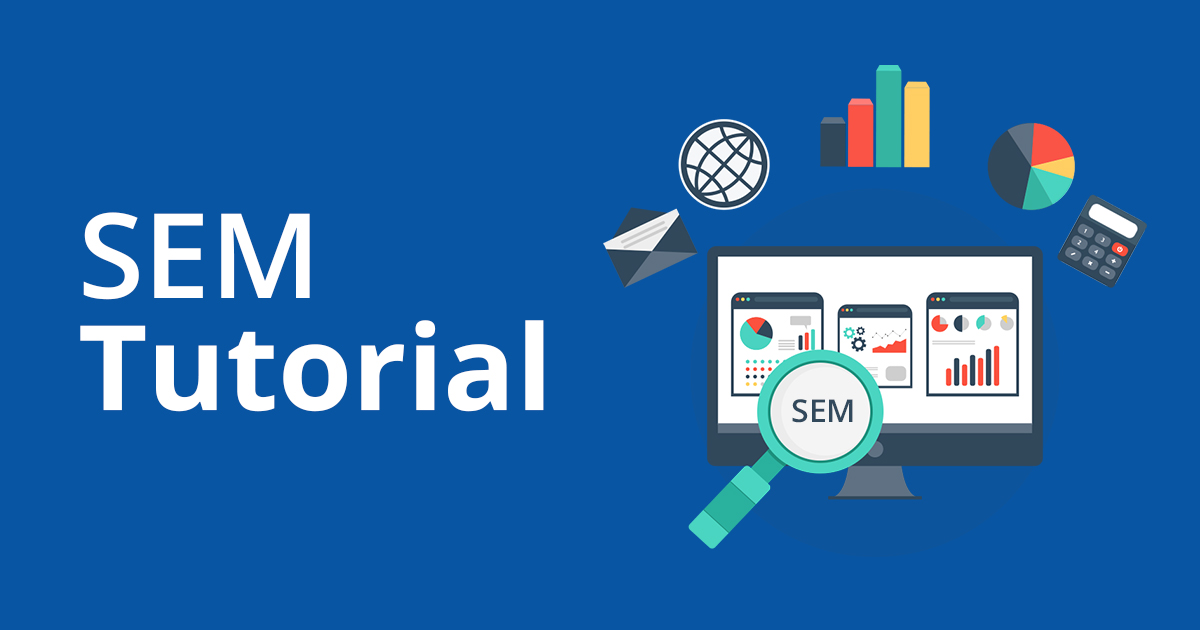

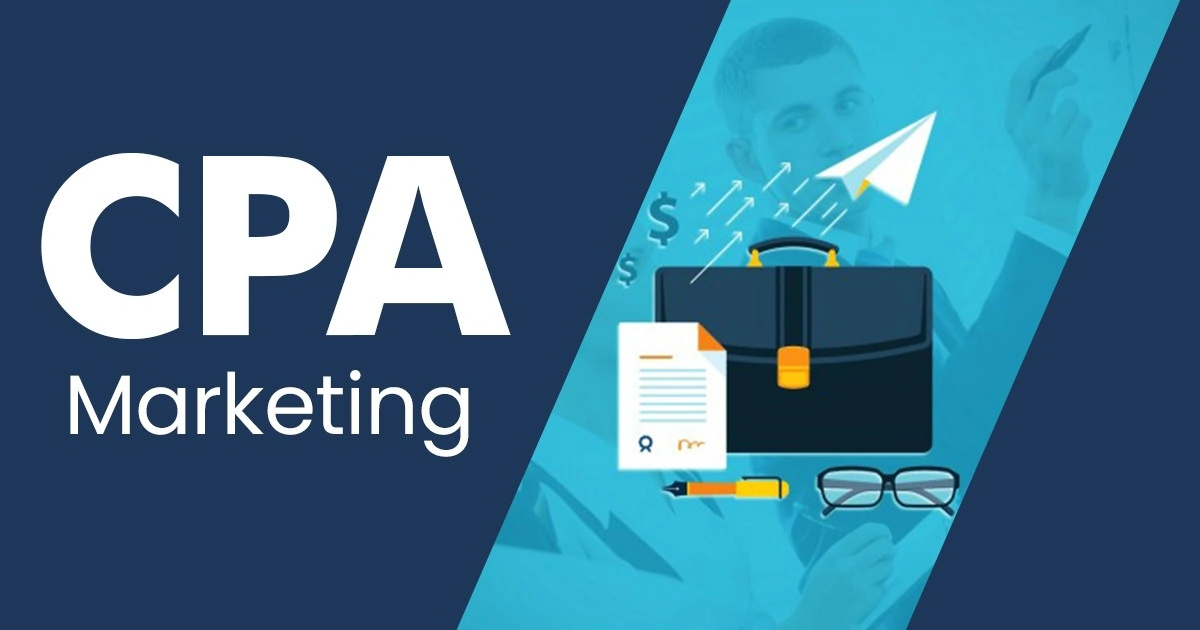
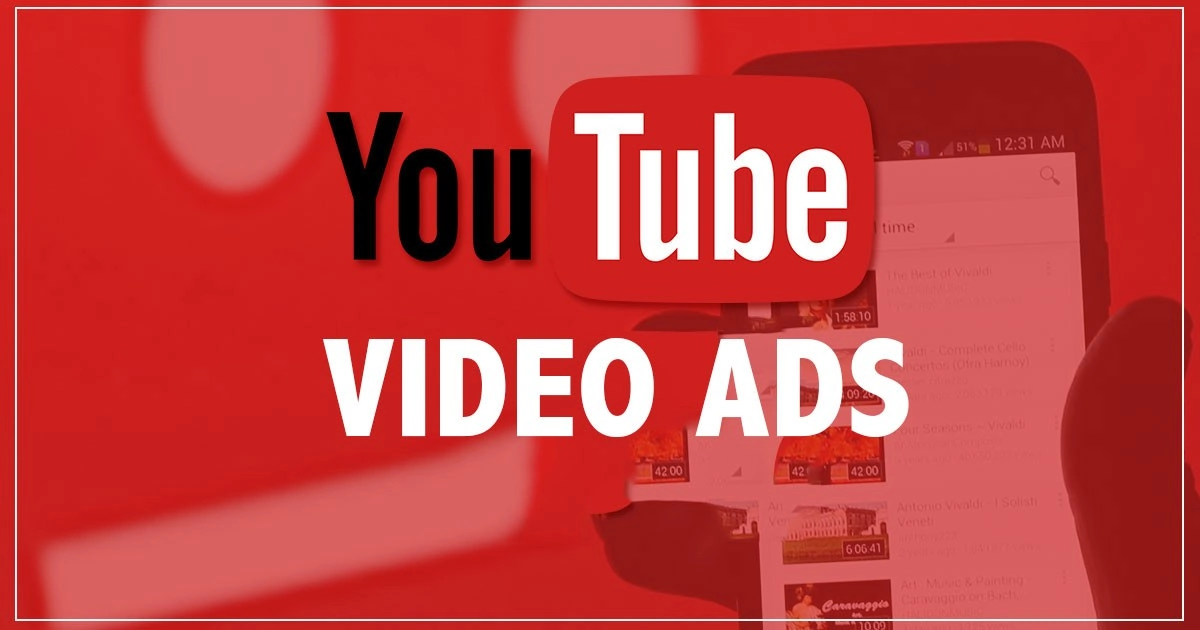


Very informative and helpful